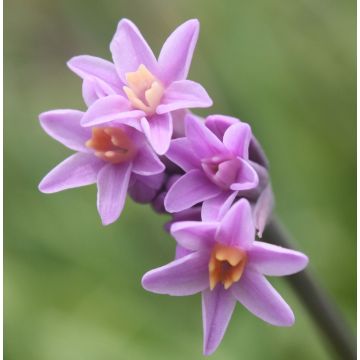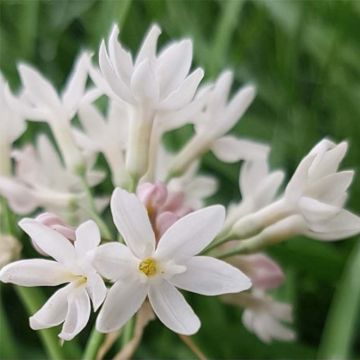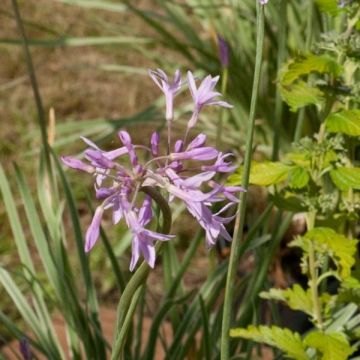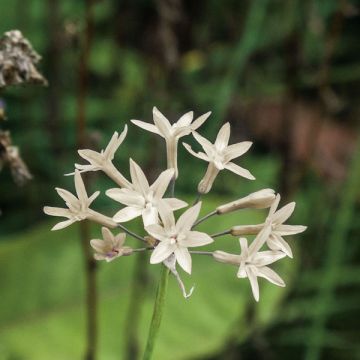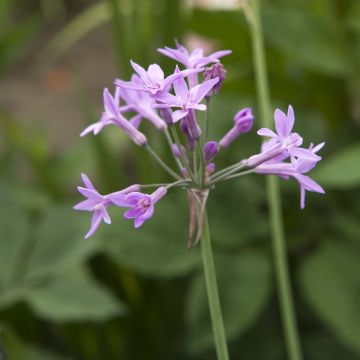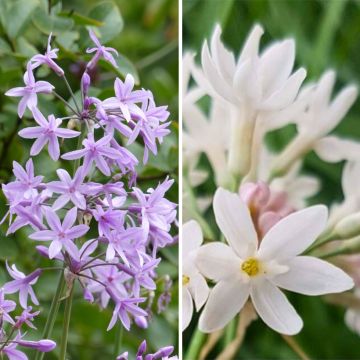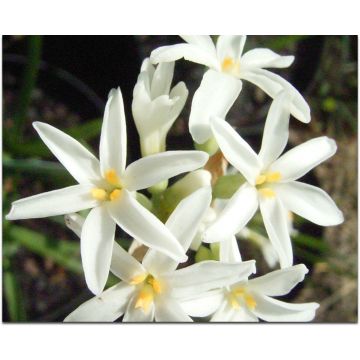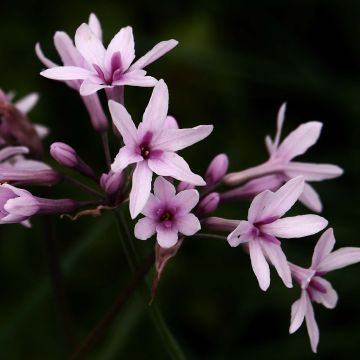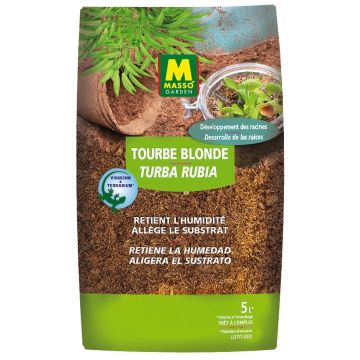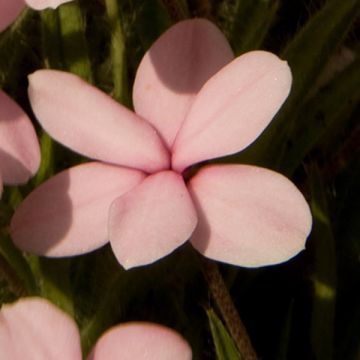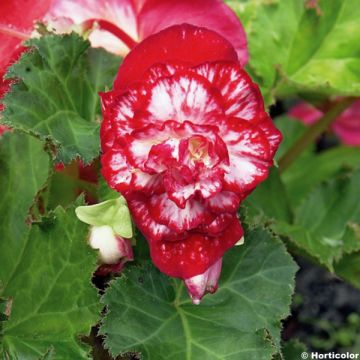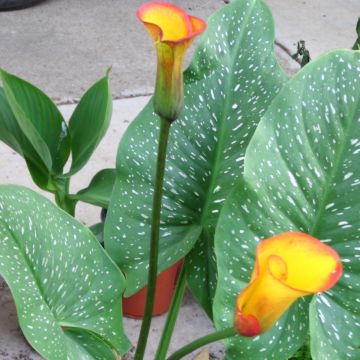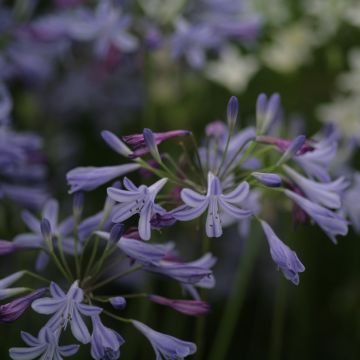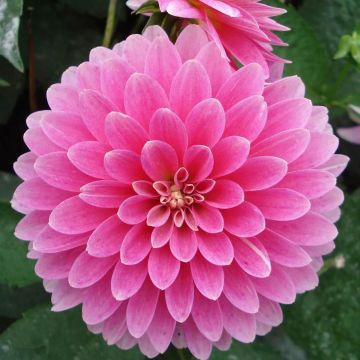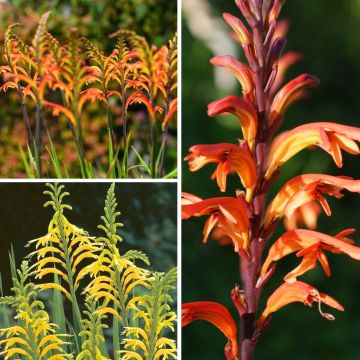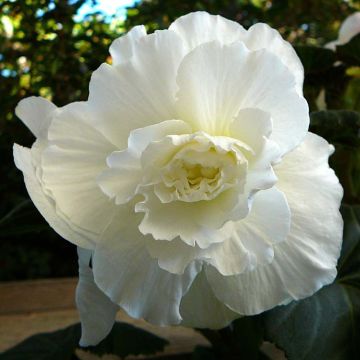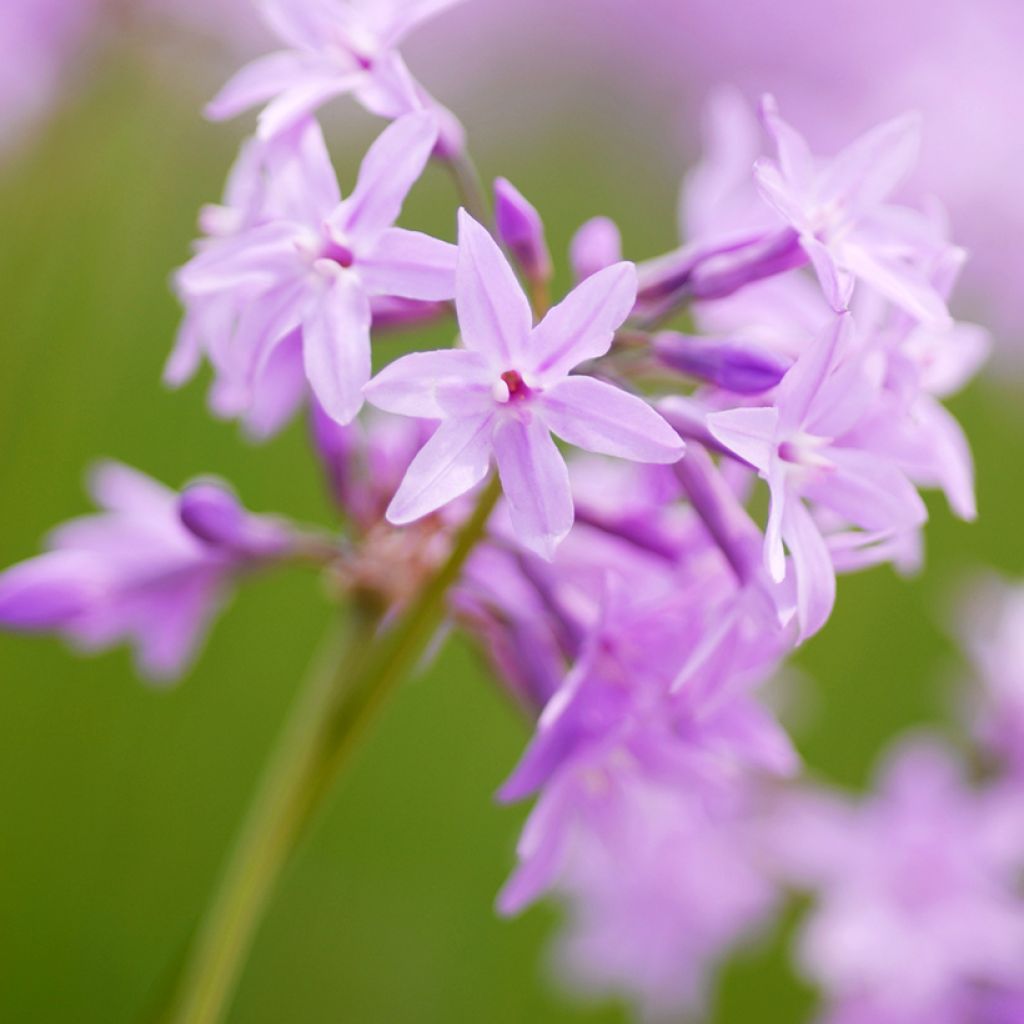

Tulbaghia violacea Dark Star - Society garlic
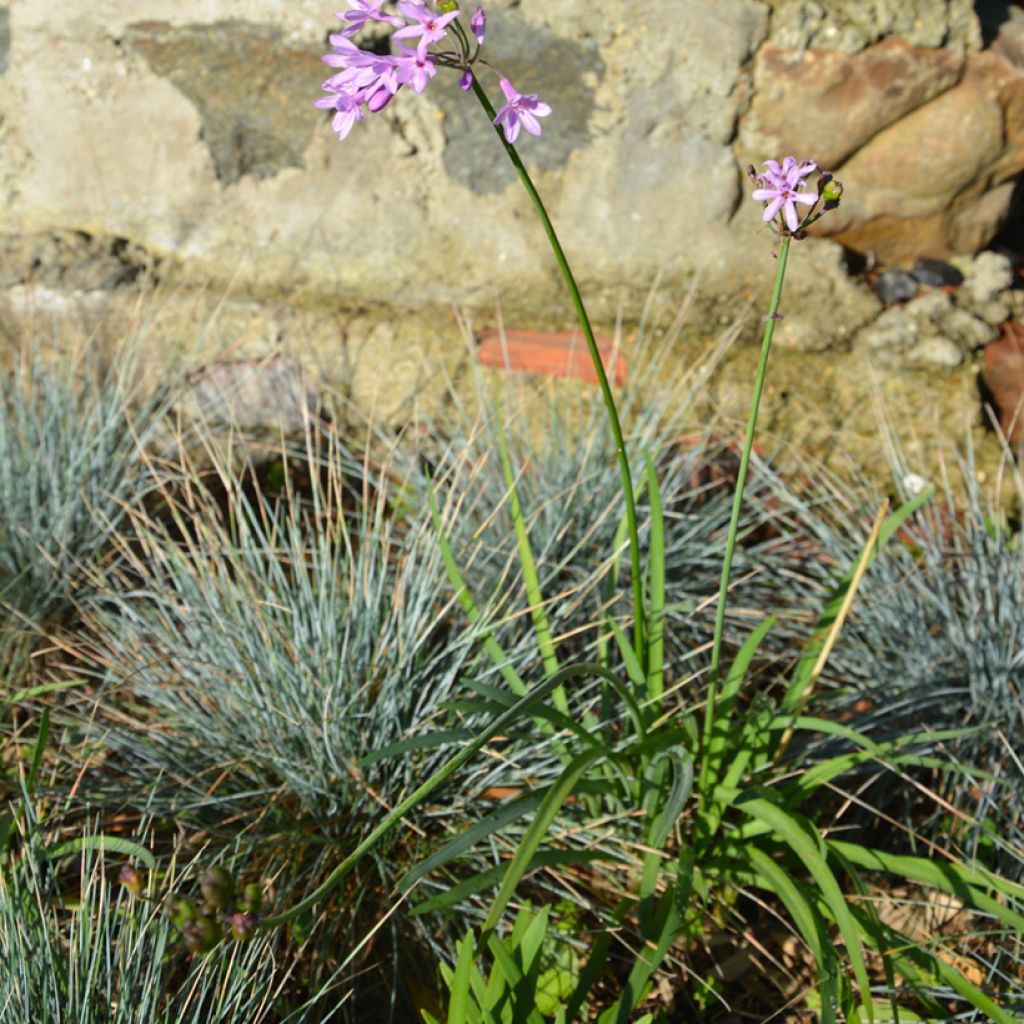

Tulbaghia violacea Dark Star - Society garlic
Tulbaghia violacea Dark Star - Society garlic
Tulbaghia violacea Dark Star® '608.3'
Society garlic, Pink agapanthus, Wild garlic, Sweet garlic
This plant carries a 6 months recovery warranty
More information
We guarantee the quality of our plants for a full growing cycle, and will replace at our expense any plant that fails to recover under normal climatic and planting conditions.
From €5.90 for pickup delivery and €6.90 for home delivery
Express home delivery from €8.90.
Does this plant fit my garden?
Set up your Plantfit profile →
Description
Tulbaghia 'Dark Star', a bulbous perennial native to South Africa, is a very hardy variety (-15 to -20°C), which also adapts to dry climates and coastal conditions. Its abundant flowering extends from April to the first frosts, in the form of purple tubular flowers grouped in small umbels. Its narrow, elegant, grey-green leaves, are evergreen in winter and release a characteristic garlic scent when crushed. As there is no need to prune the faded flowers, this variety requires little maintenance.
Belonging to the Amaryllidaceae family, Tulbaghia 'Dark Star' forms a dense, upright clump about 60 cm high by 50 cm wide. Its slender floral stems emerge continuously from the foliage, from April until the first frosts. These are delicate umbels of star-shaped purple flowers, which renew themselves continuously. Its edible flowers and leaves bring an original touch to cooking, enhancing salads and omelettes with a delicate garlic flavour. The plant is perfect for beds, borders, rockeries or containers, where it fits in equally well with modern or natural compositions.
Easy to grow Tulbaghia 'Dark Star' appreciates sunny exposures and well-drained soils, even poor ones. Tolerant of drought, it adapts to maritime climates and withstands sea spray. Avoid excess moisture in winter, which can compromise its hardiness. Plant it in light soil, at a depth of 10-15 cm, and mulch with gravel to limit water loss. Dividing the clumps every 3-4 years helps maintain vigorous plants.
To accompany it, consider compact agapanthus such as ‘Peter Pan’ or ‘Silver Baby’. Also, associate it with robust lavenders such as Lavandula angustifolia ‘Hidcote’ or ‘Munstead’, which will provide a pleasant contrast with their blue flowers and silver-grey foliage. Acaena hybrid 'Blue Haze', a soft and sculptural ground cover, will perfectly complement this natural Mediterranean scene. Plant your Tulbaghia in groups for a structured and long-lasting landscape effect.
Report an error about the product description
Tulbaghia violacea Dark Star - Society garlic in pictures


Plant habit
Flowering
Foliage
Botanical data
Tulbaghia
violacea
Dark Star® '608.3'
Amaryllidaceae
Society garlic, Pink agapanthus, Wild garlic, Sweet garlic
Cultivar or hybrid
Other Tulbaghia
Planting and care
Tulbaghia 'Dark Star' appreciates very well-drained soils, whether slightly acidic, neutral, or slightly chalky. It prefers light and sandy soils. Its good hardiness (-15 to -20°C) will be reduced in soil which is wet and poorly drained in winter. A mix of leaf compost and sand makes a good substrate for its cultivation. Choose a sunny or partially shaded exposure in the hottest and sunniest regions. It likes moist soils during its flowering period (spring-summer), but drier in autumn and winter. It perfectly tolerates sea spray. In the ground, space the plants 40 cm apart. In autumn, prune the clumps to 3 or 4 cm above the ground and mulch generously to protect them from the cold.
In a pot: repot your plants in a pot about twenty centimetres in size containing 1/3 compost, 1/3 leaf compost, and 1/3 sand. Leave them in a warm and well-lit place (but without direct sunlight) until the last frosts. You can then take your pot outside. Bring them indoors at the beginning of autumn when temperatures start to drop.
Planting period
Intended location
Care
This item has not been reviewed yet - be the first to leave a review about it.
Bulbs to grow in pots
Haven't found what you were looking for?
Hardiness is the lowest winter temperature a plant can endure without suffering serious damage or even dying. However, hardiness is affected by location (a sheltered area, such as a patio), protection (winter cover) and soil type (hardiness is improved by well-drained soil).

Photo Sharing Terms & Conditions
In order to encourage gardeners to interact and share their experiences, Promesse de fleurs offers various media enabling content to be uploaded onto its Site - in particular via the ‘Photo sharing’ module.
The User agrees to refrain from:
- Posting any content that is illegal, prejudicial, insulting, racist, inciteful to hatred, revisionist, contrary to public decency, that infringes on privacy or on the privacy rights of third parties, in particular the publicity rights of persons and goods, intellectual property rights, or the right to privacy.
- Submitting content on behalf of a third party;
- Impersonate the identity of a third party and/or publish any personal information about a third party;
In general, the User undertakes to refrain from any unethical behaviour.
All Content (in particular text, comments, files, images, photos, videos, creative works, etc.), which may be subject to property or intellectual property rights, image or other private rights, shall remain the property of the User, subject to the limited rights granted by the terms of the licence granted by Promesse de fleurs as stated below. Users are at liberty to publish or not to publish such Content on the Site, notably via the ‘Photo Sharing’ facility, and accept that this Content shall be made public and freely accessible, notably on the Internet.
Users further acknowledge, undertake to have ,and guarantee that they hold all necessary rights and permissions to publish such material on the Site, in particular with regard to the legislation in force pertaining to any privacy, property, intellectual property, image, or contractual rights, or rights of any other nature. By publishing such Content on the Site, Users acknowledge accepting full liability as publishers of the Content within the meaning of the law, and grant Promesse de fleurs, free of charge, an inclusive, worldwide licence for the said Content for the entire duration of its publication, including all reproduction, representation, up/downloading, displaying, performing, transmission, and storage rights.
Users also grant permission for their name to be linked to the Content and accept that this link may not always be made available.
By engaging in posting material, Users consent to their Content becoming automatically accessible on the Internet, in particular on other sites and/or blogs and/or web pages of the Promesse de fleurs site, including in particular social pages and the Promesse de fleurs catalogue.
Users may secure the removal of entrusted content free of charge by issuing a simple request via our contact form.
The flowering period indicated on our website applies to countries and regions located in USDA zone 8 (France, the United Kingdom, Ireland, the Netherlands, etc.)
It will vary according to where you live:
- In zones 9 to 10 (Italy, Spain, Greece, etc.), flowering will occur about 2 to 4 weeks earlier.
- In zones 6 to 7 (Germany, Poland, Slovenia, and lower mountainous regions), flowering will be delayed by 2 to 3 weeks.
- In zone 5 (Central Europe, Scandinavia), blooming will be delayed by 3 to 5 weeks.
In temperate climates, pruning of spring-flowering shrubs (forsythia, spireas, etc.) should be done just after flowering.
Pruning of summer-flowering shrubs (Indian Lilac, Perovskia, etc.) can be done in winter or spring.
In cold regions as well as with frost-sensitive plants, avoid pruning too early when severe frosts may still occur.
The planting period indicated on our website applies to countries and regions located in USDA zone 8 (France, United Kingdom, Ireland, Netherlands).
It will vary according to where you live:
- In Mediterranean zones (Marseille, Madrid, Milan, etc.), autumn and winter are the best planting periods.
- In continental zones (Strasbourg, Munich, Vienna, etc.), delay planting by 2 to 3 weeks in spring and bring it forward by 2 to 4 weeks in autumn.
- In mountainous regions (the Alps, Pyrenees, Carpathians, etc.), it is best to plant in late spring (May-June) or late summer (August-September).
The harvesting period indicated on our website applies to countries and regions in USDA zone 8 (France, England, Ireland, the Netherlands).
In colder areas (Scandinavia, Poland, Austria...) fruit and vegetable harvests are likely to be delayed by 3-4 weeks.
In warmer areas (Italy, Spain, Greece, etc.), harvesting will probably take place earlier, depending on weather conditions.
The sowing periods indicated on our website apply to countries and regions within USDA Zone 8 (France, UK, Ireland, Netherlands).
In colder areas (Scandinavia, Poland, Austria...), delay any outdoor sowing by 3-4 weeks, or sow under glass.
In warmer climes (Italy, Spain, Greece, etc.), bring outdoor sowing forward by a few weeks.

































